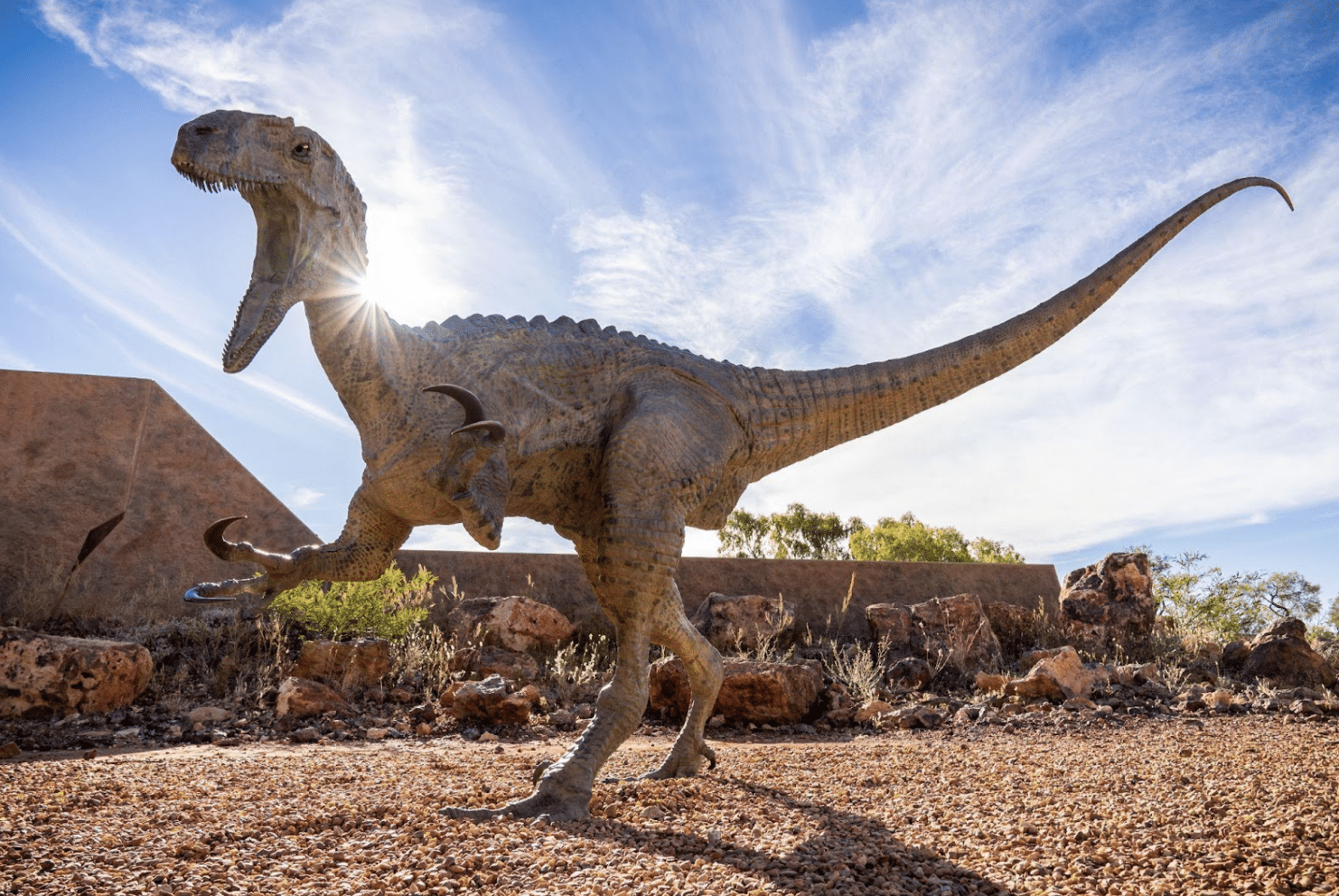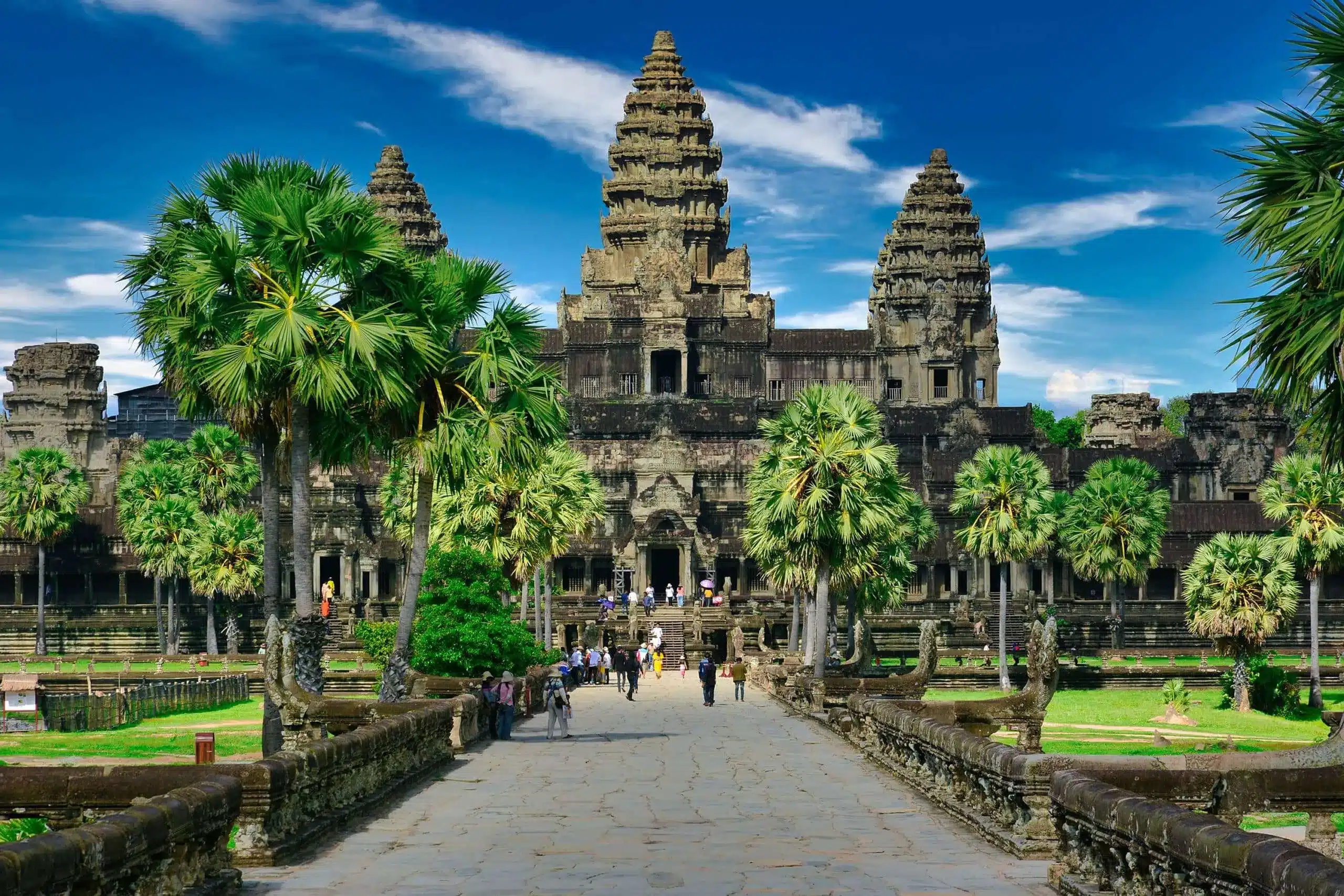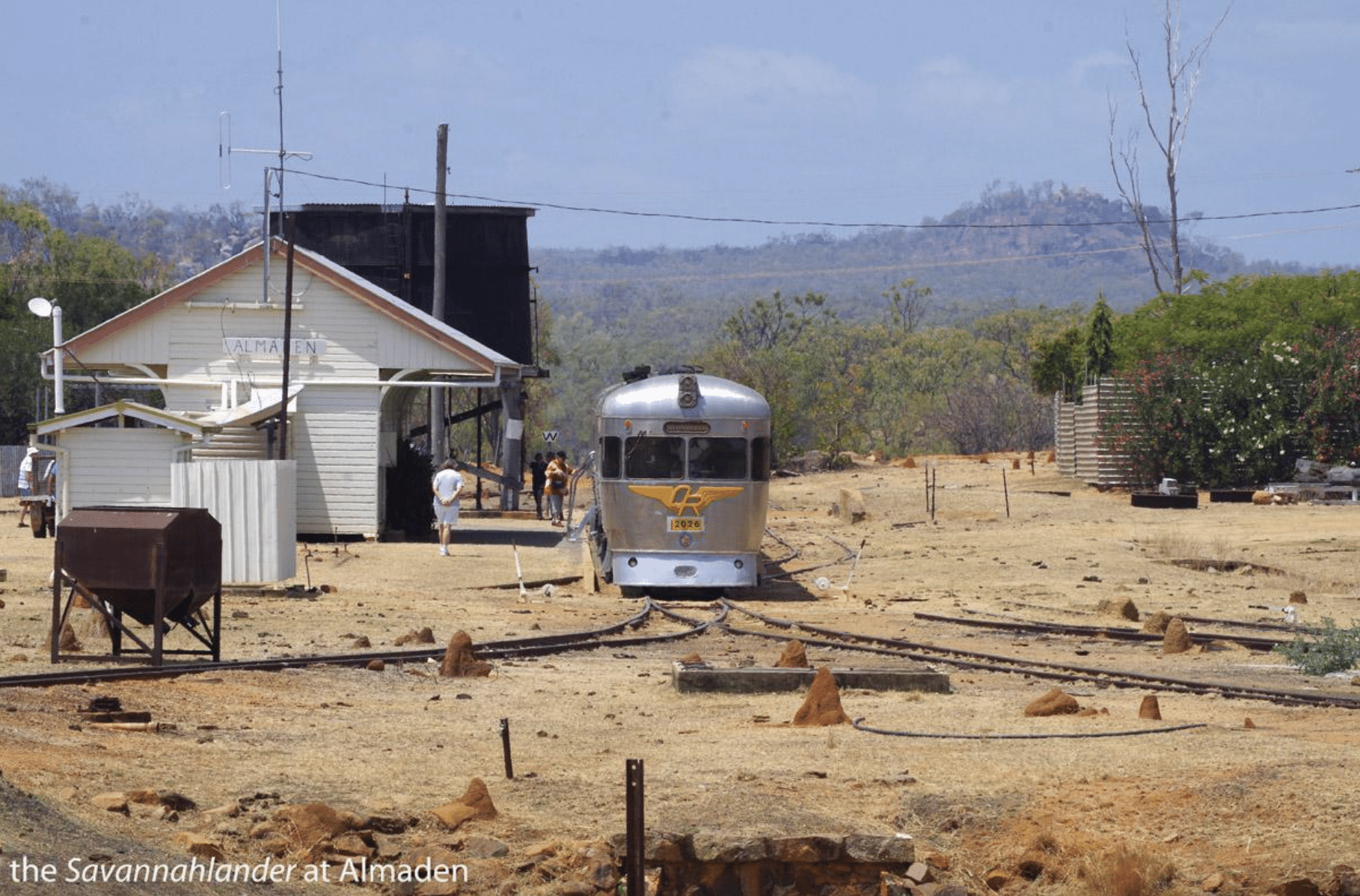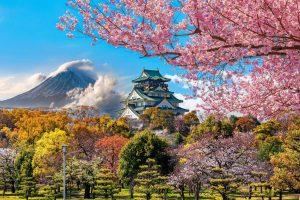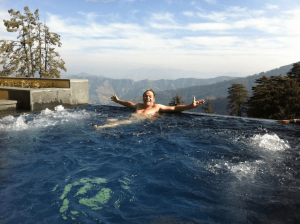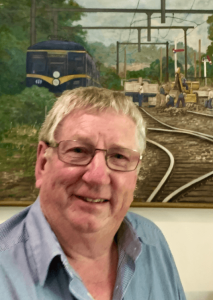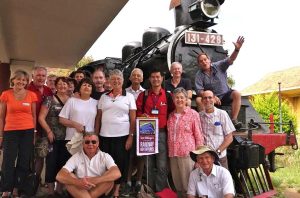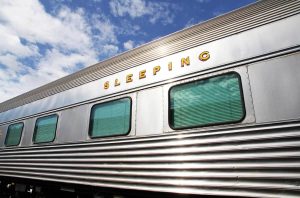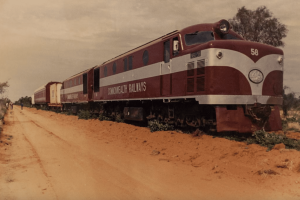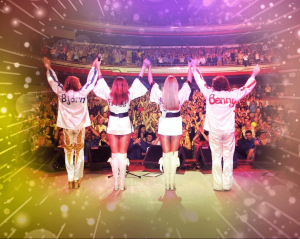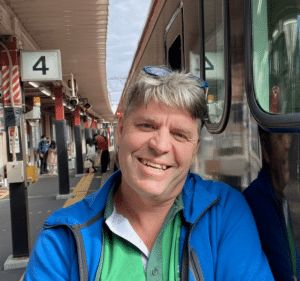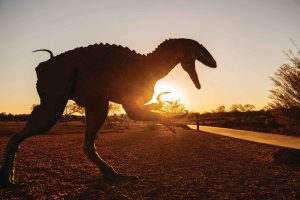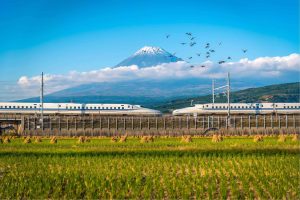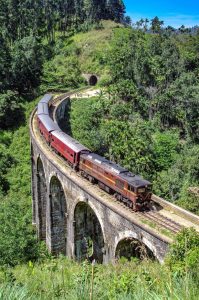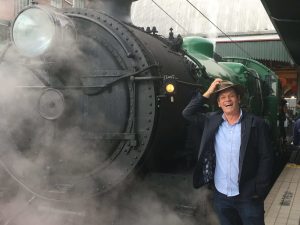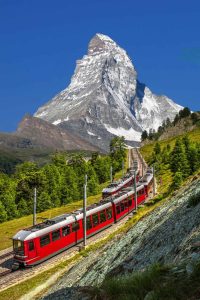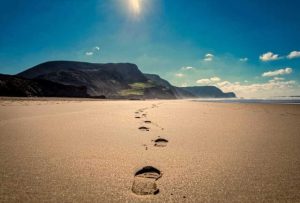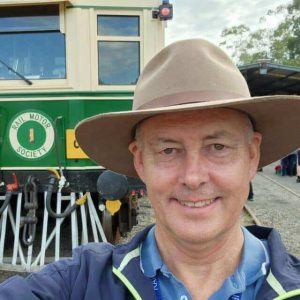By Howard Rich
My journey with Scott McGregor’s railway Adventures, March 2016
A motorbike police escort, complete with wailing sirens, lined the route and paved the way for our group of surprised but delighted travellers as we made the 20 minute bus journey through the choking peak hour ‘tuk tuk’ morning traffic from the comfortable Grand Cinnamon Hotel in Colombo to the Fort Railway Station. “It’s just to get you in the mood,” quipped our tour director Scott McGregor of Railway Adventures. There’s nothing quite like a bit of excitement to get you going for the day.”
And he was right! It was a great surprise to herald the start of our Sri Lanka odyssey in such an unusual manner. We all felt as if we were either a President or Prime Minister on the way to an important historical event or else a movie star being whisked away to the ‘set’ as thousands of waving onlookers quizzically tried to catch a glimpse of our party through the bus windows.
Many an entranced set of local eyes awaiting their train to come into the platform witnessed our departure from the station by also waving excitedly at our group………. and it was a similar experience for the whole of our train journey. Stopping to meet the local schoolchildren in a remote valley 2000 metres above sea level was awe inspiring as the smiling youngsters swarmed around us, intrigued by our dress sense, our accents and fair skinned faces!!
Indeed, the event was extra special – a quintessential and intimate train journey on the Viceroy Special, a 1928 period locomotive dating back to the British-ruled Ceylon, as Sri Lanka was then known before he country gained independence in 1972. We were about to get a semblance of what the Viceroy and his entourage experienced, complete with the ‘bells and whistles’ of the luxurious mahogany lined dining carriages, magnificent food and beverages served by waiters in their black and white finery , and décor befitting the Colonial elegance of yesteryear, right down to the intricately designed linen tablecloths. And in deference to modern day wellbeing, there was also a masseur on board to cater to the group.
Then were the opportunities to travel up front with the train driver which cast my mind back to the wonderful TV series from the 1960’s ‘Casey Jones’, even though this section of the journey was driven by a diesel locomotive (it wasn’t until the last leg of the journey that we would actually experience a steam train locomotive haul). We were enthralled by the wonderful scenery including waterfalls, historical artefacts, religious structures, tea plantations etc.
Colombo By Jeep from Railway Adventures on Vimeo.
The highlights of Sri Lanka were many and varied for our group. These included:
Aukana – home to a magnificent 12 metre high Budda statue believed to have been carved in the 5th century AD.
Polunuaruwa, once the capital of Sri Lanka. Now known an ‘The City of the Land,’ Polonuaruwa was the capital from 11th to the 13th century. Here you can see no less than 60 different species of birds, six of which are exclusive to Sri Lanka.
Sigiriya (Lion Rock), as much an identity in Sri Lanka as the Ayers Rock is to millions of visitors worldwide. Sigiriya is a massive stone monolith rising 150 metres from surrounding green scrub jungle. With close to 1200 steps, spiral staircase style, it proved a daunting but yet immensely satisfying challenge. The 360 degree view from the top was breathtaking.
Nuwara Eliya, gateway to the hill country: We stayed at the Grand Hotel which reminded me so much of the Hydro Majestic Hotel in the Blue Mountains, west of Sydney. Dining at Hill Club nearby was a special treat. Established by a former British tea planter in 1876 as a ‘home away from home’, the Hill Club is today a privately operated club and motel. In a stunningly majestic colonial style environment, we were treated to a feast of oak breast of duck, tournedos rossini, fillet of fish a la maison–pan fried mullet flamed with pernod and cooked with delicious prawns. The next morning, our coach then embarked on a series of winding roads in the hill country that led us to the tea plantations laid out no doubt by inspiring landscapers whose designs mirrored some of Europe’s garden efforts. A highlight of sorts was a flower seller who after trying to get our bus driver’s attention at the top of one of the winding roads was determined to get our coach to stop at every turn so we could purchase some of his wares. The coach didn’t stop but that didn’t deter the ‘marathon man’ as he hurtled down the mountainside at every turn determined to make the driver stop. The driver never did but full marks for persistence by the marathon man and his first class attempts at salesmanship!! It was it must be said this was one of the more unusual highlights of the trip. After arriving at the tea factory destination, we were able to pick our own buds from the vines and transfer our proceeds to the specially woven baskets before proceeding to the assembly line for the tea processing activity.
Mahaweli Reach Hotel, located five kilometres from the centre of Kandy, provided the perfect relaxation before hitting the shopping trail – mainly for Kandy’s renowned jewellery.
Peridenya, home to a brilliant Botanical Gardens – 60 acres of gardens including ancient figs, teaks and some massive Queensland and New Zealand Kauri Pines – all topped off by inquisitive monkeys and all sorts of wondrous bird life. A highlight for my wife and I was when some school teachers came up to us and asked us to address the students under gigantic trees to talk about life in Australia. We were rewarded with some beautiful painted card creations as a thank you for our contributions. All of the students seemed keen to visit Australia one day.
Kandy to Raubukkana rail journey also incorporated a ‘tuk tuk’ ride to Pinnawela Elephant Orphanage – a sight to behold as our group hand-fed the magnificent creatures before they strolled through the town with their ‘masters’ keeping them on the straight and narrow, en route to the river below where the elephants bathed contentedly in the gentle waters.
Another surprise not in the tour brochure: a trip from our hotel in Colombo to the station by army style jeeps in convoy style. Again we were the centre of attention of the city populous!! The train route to Galle from Colombo, hauled by one of Sri Lanka’s only operating steam locomotives, was a joy to behold as it wound its way past quaint but rustic seaside cottages and huts. Galle, a fort city known as the ‘Ramparts of Galle’, has a great mixture of bazaars, shops, and restaurants and for me an added highlight was a magnificent cricket ground with the fort as its backdrop. Australia in fact will be playing at the ground as part of a tour to Sri Lanka this year. There are countless beaches and many hotels have glorious views over the ocean, complete with stunning sunsets.
I now understand Sri Lanka’s high rating for food as evidenced by a 15 day Food and Festivals tour of Sri Lanka to be hosted by the famous Sri Lanka award winning chef Peter Kuravita, who is also a leading restaurateur, author and TV presenter. According to Peter, the Ministry of Crab restaurant in the old Dutch Hospital grounds of Colombo (and owned by two renowned former Sri Lanka cricketers) is the best culinary experience in the city. “Its signature chilli crab dish is world class. Street food is also popular particularly egg roti – the roti dough is rolled until it is paper thin, folded up with an egg inside and then cooked on the griddle in front of you. However the market is the heartbeat of the city in the narrow streets of Pettah. There are also many roof top bars where you can sip elegant cocktails and enjoy great views of the city and ocean.”
It was Marco Polo, one of the world’s most travelled conquerors, who declared in the 13th century that the country was ‘the finest island of its size in all the world’. In fact, Sri Lanka is roughly the size of Tasmania but the former has some 22 million inhabitants.
Sri Lanka has had to undergo a long running and devastating civil war and a tumultuous tsunami but it is an incredibly resilient race which openly embraces tourists now that peace reigns and the locals are keen to show off the manydelightful facets of the country. With Indian, Dutch, Portuguese and British influences, the country naturally has a very diverse and fascinating mix of cultures to excite visitors.
The tea industry has indeed helped to make the country famous. The images associated with Ceylon teas have delighted conoissseurs the world over and it’s no surprise that tea products contribute 12 % of the country’s GDP and employs a quarter of a million people. However, it was actually coffee production that stimulated the railway revolution on the island. Construction of a railway from Colombo to the hill country in the centre of the island began in 1864. A crop disease in the 1870’s virtually wiped out the coffee business with planters quickly switching to tea resulting in a highly successful industry based on some of the world’s best quality, along with high productivity. Railways spread throughout the 19th century in order to tap into the rich trade and were responsible for an economic boom resulting in over 1500 kilometres of broad gauge line and 320 stations being built, serving more than 300,000 passengers.
But it is indeed the people along with the food, the culture and the stunning scenery, including great historic landmarks with no less than eight UNESCO World Heritage sites, that largely make Sri Lanka – the teardrop nation – the gem that it is. I’ll definitely be back for more tears of joy.
